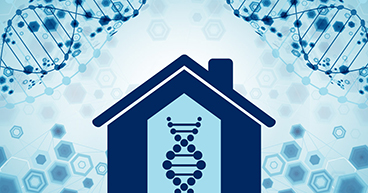
Breakthroughs in cancer treatments often grab the headlines—and for good reason. New treatments developed in this century alone have saved and extended millions of lives and even cured some cancers.
In some cases, new treatments have turned cancer from a deadly disease into a chronic, manageable illness. Today, more than Americans than ever are living with cancer. According to the National Cancer Institute (NCI), 18 million Americans—more than 5 percent of the population—are cancer survivors.
But what saves the lives of more people than cancer treatments is preventing the disease or catching it early when more treatment options are available, according to a sweeping NCI study published in December 2024 in the Journal of the American Medical Association.
Researchers examined millions of cases of five cancers—breast, lung, colorectal, cervical and prostate —and concluded that “cancer prevention and screening activities were the main contributors to reductions in mortality due to the most common cancers in the U.S. over the past 45 years.”
The study found 80 percent of the 6 million people diagnosed with these cancers between 1975 and 2020 survived as a result of preventing and screening.
Most of the deaths prevented were from lung cancer, due to smoking cessation. Only in breast cancer were more deaths averted (75 percent) by treatment advancements rather than screening, the study says.
"Although many people may believe that treatment advances are the major driver of reductions in mortality from these five cancers combined, the surprise here is how much prevention and screening contribute to reductions in mortality," says Katrina A. B. Goddard, PhD, director of NCI’s Division of Cancer Control and Population Sciences and one of the lead-investigators of the study. “Eight out of 10 deaths from these five cancers that were averted over the past 45 years were due to advances in prevention and screening.”
In this article, we’ll explore:
- How treatment breakthroughs have saved lives
- How nearly 6 million cancer deaths were avoided
- Which cancer screenings do you need?
If you are experiencing cancer symptoms or have already been diagnosed with cancer and want to learn more about screening or treatment options, call us or chat online with a member of our team.
How treatment breakthroughs have saved lives
There’s no question that treatment breakthroughs have saved and changed the lives of millions of people with cancer. In the last 25 years new cancer treatments approved by the U.S. Food and Drug Administration (FDA) have improved survival rates for people diagnosed with the disease, including those listed below.
Targeted cancer therapy: The first targeted therapy drug imatinib (Gleevac®), approved by the FDA in 2001, dramatically improved outcomes for patients with chronic myelogenous leukemia. Imatinib and newer and more effective similar versions work by blocking cells mutated with the so-called “Philadelphia chromosome.”
Checkpoint inhibitors: These new drugs, first approved in 2011, have been a game changer for patients with melanoma, lung cancer and many other cancers. These drugs work by blocking signals cancer cells use to evade the immune system.
CDK4/6 inhibitors: These drugs have extended the lives of millions of women with specific types of breast cancer. These inhibitors target the CDK4 and CDK6 proteins that help regulate cell growth in breast cancer cells. It was first approved for treatment in 2015.
As a result of these treatments and many others, the number of cancer survivors in the United States is expected to grow to 26 million by 2040, according to NCI.
How nearly 6 million cancer deaths were avoided
As impressive as groundbreaking research and new discoveries have been, NCI researchers concluded that smoking cessation, Pap tests, colonoscopies and other preventative and screening strategies are more impactful in saving lives from cancer.
Here’s how the research breaks down.
Lung cancer: Of the 9.2 million deaths studied, smoking cessation accounted for 98 percent of 2.45 million lung cancer deaths prevented. Only 2 percent of the deaths prevented were due to treatment advances, the study says. Lung cancer accounts for more deaths annually (125,000) than any other cancer.
Colorectal cancer: Of the 3.45 million deaths studied, 940,000 (79 percent) were prevented by screening and removal of precancerous polyps. Colorectal cancer is the second-most common cancer in men and women, and the second deadliest.
Prostate cancer: Of the 1.01 million deaths studied, 56 percent of the 360,000 prostate cancer deaths prevented were due to screening for the prostate specific antigen (PSA). Prostate cancer is the second most common cancer diagnosed in the U.S.
Cervical cancer: Of the 370,000 deaths studied, 160,000 deaths were prevented by PAP smears, testing for the human papillomavirus (HPV) and removal of precancerous lesions. Cervical cancer ranks 20th nationally in the number of new cases but is among the most preventable cancers with regular screening and the HPV vaccine.
“To reduce cancer death rates, it's critical that we combine effective strategies in prevention and screening with advances in treatment,” says NCI Director W. Kimryn Rathmell, MD, PhD. “This study will help us understand which strategies have been most effective in reducing cancer deaths so that we can continue building on this momentum and hopefully increase the use of these strategies across the United States.”
The study noted that exceptional progress in breast cancer treatment helped prevent most deaths from the disease during the study period. Still, women, especially those at high risk or with a family history of the disease, should follow recommended guidelines for regular mammograms and other breast cancer screening strategies.
“There are familiar cancers that occur, but still the vast majority of breast cancers are random events that just occur,” said Henry Krebs, MD, interventional and diagnostic radiologist at City of Hope® Cancer Center Atlanta. “For that reason, it’s extremely important that we have screening tools and screening studies that find breast cancer in its earliest form.”
Which cancer screenings do you need?
Unfortunately, screening tests have yet to be developed for many cancers, resulting in late-stage diagnoses for many people.
Pancreatic cancer, for example, is the 10th most common cancer in the U.S. and the third deadliest. Symptoms of the disease often do not surface until it has advanced, when more than half of new cases are diagnosed. The five-year survival rate for pancreatic is 13 percent, among the lowest of all cancers.
Still, The U.S. Preventative Services Task Force (USPSTF) recommends not screening for pancreatic cancer because tests have been shown to be unreliable, may result in false positives and have no impact on mortality rates.
Screening tests are available for some common cancers, however. And, while some tests may be uncomfortable, they are generally non-invasive and relatively easy to tolerate.
Among the USPSTF screening recommendations are:
| Cancer | Screening tests | Recommendation |
|---|---|---|
| Breast | Mammogram, breast MRI | Women 40 to 74 years old and at average risk should get a mammogram every two years. Other tests may be recommended for women at high risk or with dense breasts. |
| Lung | Low-dose CT scan | People 50 to 80 who smoke or have a history of smoking should get a low-dose CT scan. |
| Colorectal | Colonoscopy, stool tests | People 45 and older should talk to their doctor about getting screened and the type of test to undergo. Those with a family history of cancer or certain conditions may need to screen earlier and/or more often. |
| Cervical | Pap test, HPV test | Women should start getting Pap tests at 21, then talk to their doctor about testing options after turning 30. The HPV vaccine has been shown to prevent cervical cancer. |
| Prostate | PSA test | Men 55 to 69 should talk to their doctor about getting periodic PSA tests. |
Doctors may order a variety of laboratory or blood tests if a patient is experiencing cancer symptoms. Samples of blood, urine or other fluids or tissue may show abnormal cells or certain markers that may indicated a person has the disease or a precancerous condition. Genetic tests may also determine whether someone has an inherited gene mutation that may increase cancer risk.
“We need to optimize the uptake and use of prevention and screening for these five cancers so that all Americans can benefit, especially underserved populations,” says co-lead investigator Philip E. Castle, PhD, director of NCI’s Division of Cancer Prevention. He added that researchers need to “develop novel prevention and screening strategies to avert deaths due to other, very lethal cancers, such as those of the pancreas and ovary.”
If you are experiencing cancer symptoms or have already been diagnosed with cancer and want to learn more about screening or treatment options, call us or chat online with a member of our team.


